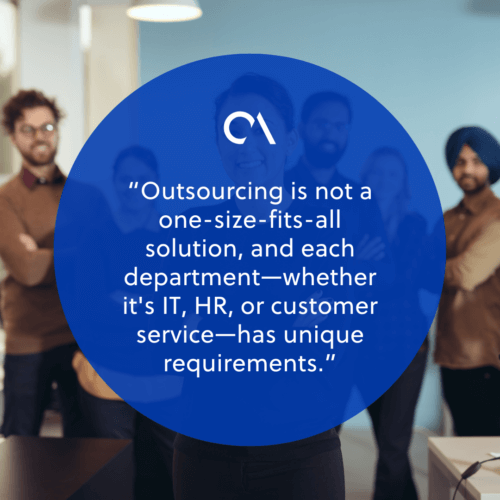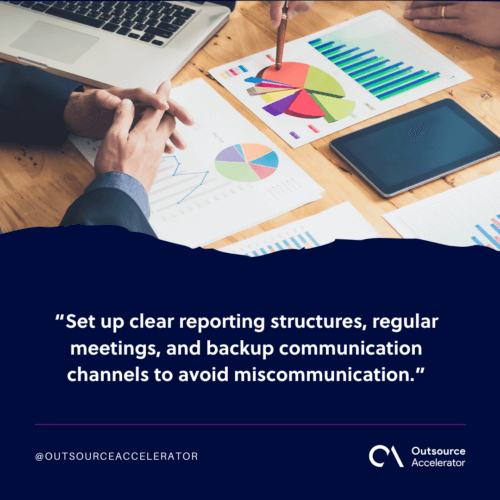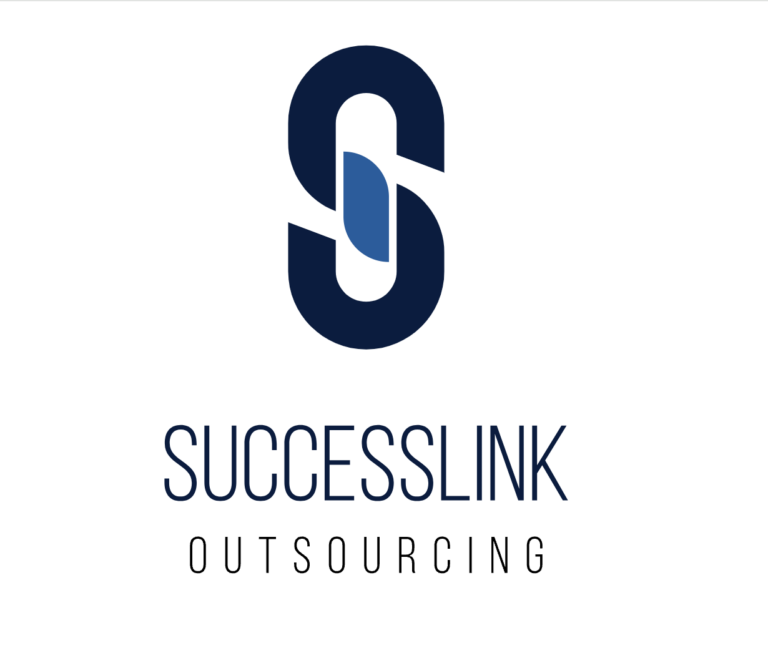The ultimate outsourcing roadmap for large enterprises: Managing complex operations effectively

This article is a submission by SuccessLink Outsourcing. SuccessLink Outsourcing is a leading provider of customized outsourcing solutions, dedicated to refining business operations across diverse industries.
Outsourcing has become an indispensable strategy for large enterprises to stay competitive in today’s global market. Whether it’s IT services, customer support, or supply chain management, outsourcing allows companies to access top talent, reduce operational costs, and focus on their core competencies.
However, managing complex operations through outsourcing can be daunting without the right roadmap in place.
This blog will guide you through the outsourcing roadmap tailored for large enterprises, ensuring that you can manage intricate processes seamlessly. From initial assessments to scaling operations globally, we’ll explore each step in detail.
7 Steps for outsourcing for large enterprises
Consider these steps in your operational roadmap:
Step 1: Assess your outsourcing needs
The first step to successful outsourcing is understanding your enterprise’s specific needs. Outsourcing is not a one-size-fits-all solution, and each department—whether it’s IT, HR, or customer service—has unique requirements.
Here are some key considerations:
Core vs. non-core activities
Identify which operations can be outsourced without compromising your core business processes. Non-core activities such as payroll, customer support, and maintenance are often great candidates for outsourcing.

Operational efficiency
Evaluate current pain points in your processes. Are you spending too much time and resources on repetitive tasks? Is your IT infrastructure struggling to keep up with technological advancements? These insights will help you identify the areas where outsourcing can provide immediate value.
Cost-benefit analysis
Outsourcing is a cost-effective solution, but it’s essential to ensure that the financial benefits outweigh the investment. Perform a detailed analysis of costs associated with hiring in-house versus outsourcing specific roles or functions.
Step 2: Select the right outsourcing model
Once you’ve identified your outsourcing needs, the next critical decision is choosing the right outsourcing model. This choice depends on several factors, including the scope of work, level of control, and operational complexity.
Here are some popular outsourcing models:
Offshore outsourcing
Ideal for cost reduction, offshore outsourcing involves partnering with a service provider in another country where labor is cheaper. This model is commonly used for IT development, data entry, and customer support.
Nearshore outsourcing
With nearshoring, you partner with vendors located in countries that are geographically closer to your headquarters. Nearshoring offers better communication, time zone alignment, and cultural understanding while still providing cost savings.
Onshore outsourcing
If control and quality are your primary concerns, consider onshore outsourcing, where you work with providers within your own country. Although onshore outsourcing can be more expensive, it’s often the best option for businesses that need close collaboration and oversight.
Hybrid outsourcing
In a hybrid model, aspects of onshore, nearshore, and offshore outsourcing are combined. This approach is ideal for large enterprises with diverse needs, as it provides flexibility in how different tasks are managed.
By selecting the right model for your business, you can maximize the value of your outsourced operations while ensuring seamless integration with your existing processes.
Step 3: Choosing the right outsourcing partner
The success of your outsourcing efforts largely depends on the partner you choose. A reliable outsourcing partner not only provides high-quality services but also acts as an extension of your internal team.
Here are a few key factors to consider:
Industry expertise
Look for outsourcing providers who have experience working in your industry. For instance, one that specializes in IT services, customer support, and finance makes it a top choice for businesses in need of complex operational support.
Reputation and track record
Check client testimonials, case studies, and references. A proven track record of delivering results in your industry should be a non-negotiable factor in your decision-making process.
Technology and infrastructure
Ensure your outsourcing partner has the right technology and infrastructure to meet your operational needs. Whether you require advanced AI tools or robust data security protocols, your partner should be well-equipped to handle these requirements.
Cultural compatibility
For seamless collaboration, cultural alignment is essential, particularly when engaging in offshore or nearshore outsourcing. This ensures that communication, work ethics, and business values align closely between your teams.
By choosing the right partner, you’ll ensure the long-term success of your outsourcing strategy.

Step 4: Define clear KPIs and SLAs
Once you’ve selected an outsourcing partner, the next step is to set clear Key Performance Indicators (KPIs) and Service Level Agreements (SLAs). These metrics are essential for measuring the effectiveness of your outsourcing operations and ensuring that your partner meets expectations.
Here are some essential KPIs for outsourcing:
Cost savings
Track the financial impact of outsourcing on your operational expenses. Have you reduced overheads, hiring costs, or IT maintenance costs?
Operational efficiency
Measure how outsourcing has improved the efficiency of your processes. Are tasks being completed faster? Is your team more focused on core activities?
Quality of service
Customer satisfaction scores, error rates, and other quality metrics should be closely monitored. Ensure that the outsourcing partner meets your standards of service delivery.
Scalability
You must consider the associated workload in the event that your business grows and expands. The outsourcing partner should have the capacity to scale their services to match your expanding needs.
Defining clear KPIs and SLAs upfront will keep both parties accountable, ensuring long-term success in your outsourcing venture.
Step 5: Integrate seamlessly with your internal teams
A common challenge when outsourcing for large enterprises is ensuring that external teams work seamlessly with your internal departments. Lack of communication and coordination can result in misalignment, delays, and inefficiencies.
Here’s how to ensure seamless integration:
Regular communication
Establish regular check-ins and status updates with your outsourcing partner. Use collaboration tools like Slack, Zoom, or Microsoft Teams to keep communication lines open.
Documentation and SOPs
Create standard operating procedures (SOPs) for outsourced tasks. This ensures that both internal and external teams are on the same page regarding expectations, workflows, and outcomes.
Cultural and time zone considerations
For offshore outsourcing, ensure that cultural and time zone differences do not affect productivity. Schedule meetings at mutually convenient times, and use collaboration tools to ensure continuous workflow.
Train your teams
Provide training to both internal and external teams on how to work together effectively. This may include cross-cultural training, process workshops, and leadership alignment sessions.
By integrating teams effectively, you’ll improve efficiency and collaboration, leading to better overall outcomes.
Step 6: Mitigate risks
Outsourcing, like any business strategy, comes with its share of risks. However, by anticipating potential issues and putting mitigation strategies in place, you can avoid disruptions to your operations.
Consider these key risks and how to manage them:
Data security
Ensure that your outsourcing partner complies with data security regulations, such as GDPR or HIPAA. Implement robust encryption and data-sharing protocols to protect sensitive information.
Compliance issues
Large enterprises often operate across multiple regulatory environments. Make sure that your outsourcing partner is well-versed in the legal requirements of your industry and region.
Communication breakdowns
Communication gaps can derail outsourcing projects. Set up clear reporting structures, regular meetings, and backup communication channels to avoid miscommunication.
Dependency risk
Over-reliance on a single outsourcing provider can be risky. Diversify your outsourcing portfolio by working with multiple vendors across different regions or services.

Step 7: Scale and optimize
The final step in your outsourcing roadmap is scaling and optimizing your operations. As your business grows, so should your outsourcing efforts. This requires continuous monitoring, performance evaluation, and strategic adjustments.
Keep these in mind when scaling your outsourcing efforts:
Global expansion
Leverage outsourcing to expand into new markets without the need for large capital investments. This is particularly useful for scaling customer support, IT services, and logistics operations globally.
Technology integration
Continuously upgrade your technology stack to improve outsourced operations. For example, incorporating AI or machine learning can automate repetitive tasks and enhance efficiency.
Vendor management
As you scale, managing multiple vendors can become complex. Implement a Vendor Management System (VMS) to track performance, contracts, and billing across all your outsourcing partners.
By scaling strategically, you can maximize the benefits of outsourcing for large enterprises and continuously improve your operational efficiency.







 Independent
Independent




